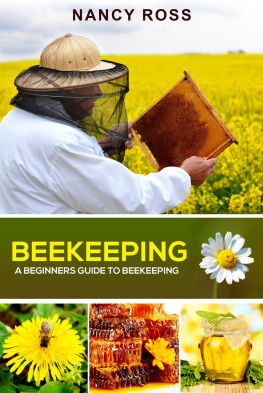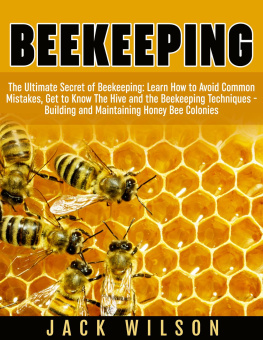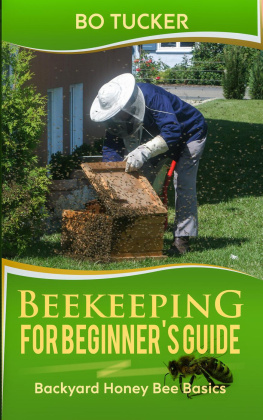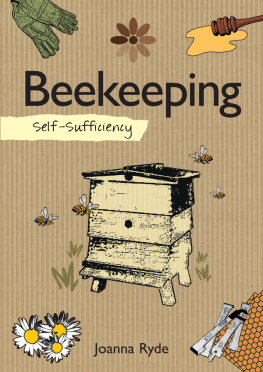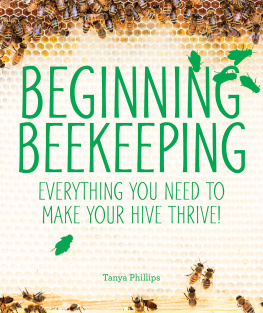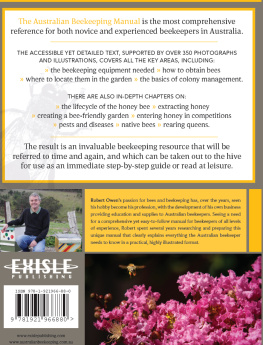Kim Flottum - First Time Beekeeping
Here you can read online Kim Flottum - First Time Beekeeping full text of the book (entire story) in english for free. Download pdf and epub, get meaning, cover and reviews about this ebook. year: 2020, publisher: Quarry Books, genre: Home and family. Description of the work, (preface) as well as reviews are available. Best literature library LitArk.com created for fans of good reading and offers a wide selection of genres:
Romance novel
Science fiction
Adventure
Detective
Science
History
Home and family
Prose
Art
Politics
Computer
Non-fiction
Religion
Business
Children
Humor
Choose a favorite category and find really read worthwhile books. Enjoy immersion in the world of imagination, feel the emotions of the characters or learn something new for yourself, make an fascinating discovery.

- Book:First Time Beekeeping
- Author:
- Publisher:Quarry Books
- Genre:
- Year:2020
- Rating:5 / 5
- Favourites:Add to favourites
- Your mark:
- 100
- 1
- 2
- 3
- 4
- 5
First Time Beekeeping: summary, description and annotation
We offer to read an annotation, description, summary or preface (depends on what the author of the book "First Time Beekeeping" wrote himself). If you haven't found the necessary information about the book — write in the comments, we will try to find it.
First Time Beekeeping — read online for free the complete book (whole text) full work
Below is the text of the book, divided by pages. System saving the place of the last page read, allows you to conveniently read the book "First Time Beekeeping" online for free, without having to search again every time where you left off. Put a bookmark, and you can go to the page where you finished reading at any time.
Font size:
Interval:
Bookmark:
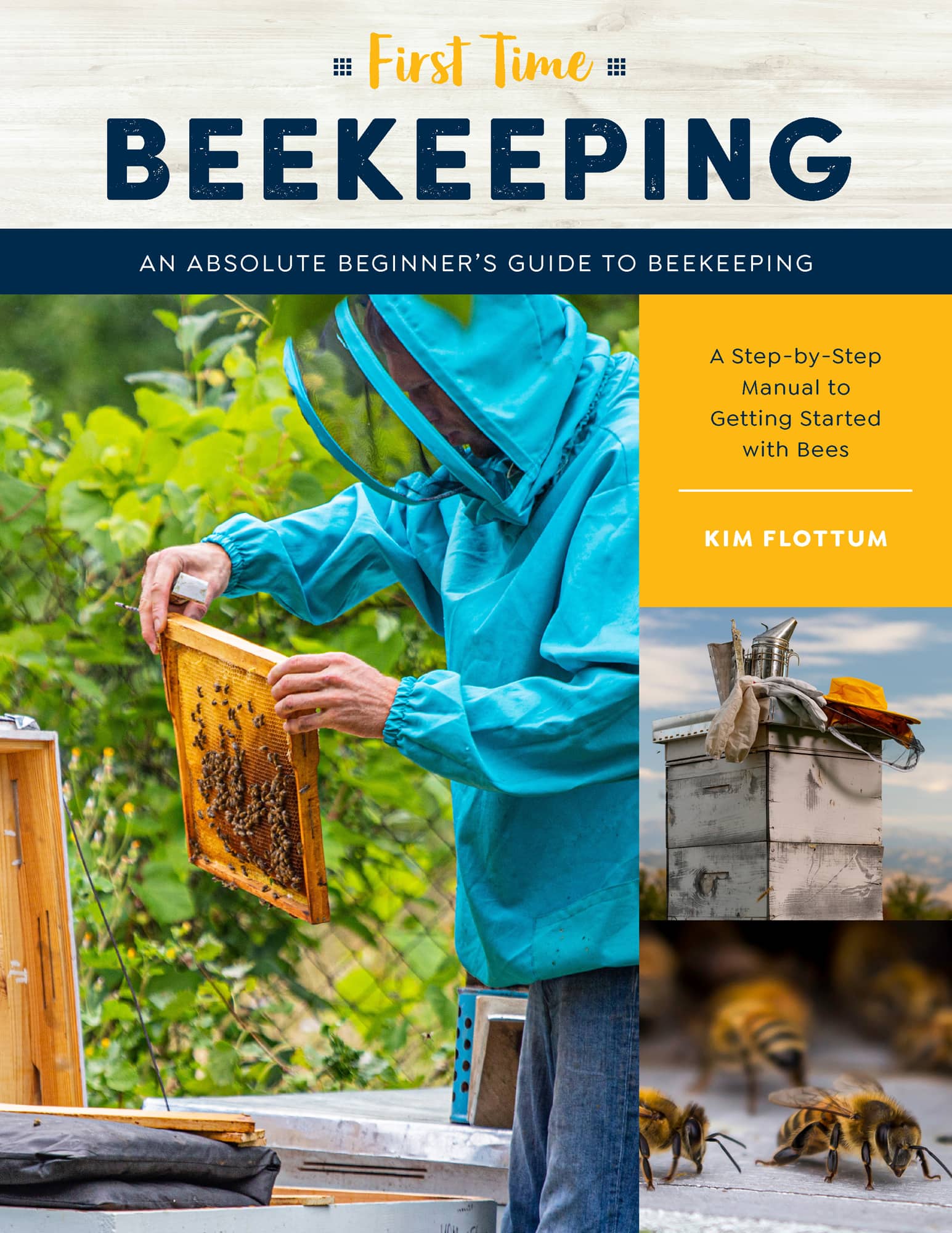
First Time
AN ABSOLUTE BEGINNERS GUIDE TO BEEKEEPING
A Step-by-Step Manual to Getting Started with Bees
KIM FLOTTUM

Since the first edition of my book Backyard Beekeeper was published more than fifteen years ago, a tsunami of change has crashed over the beekeeping world. We must look anew at what it is to be a beekeeper. But even though so much has changed, much of the fundamental information remains.
Of course, much of the attention bees, beekeepers, and beekeeping have received in the past several years can be attributed to, as the scientists will tell you, the multifactorial causes that result in an unhealthy, or worse, dead colony of bees. One USDA researcher summed it as the Problems of the four Ps: Parasites, Predators, Pesticides, and Pasture.
None of these factors, on their own, is the killing blow. Rather, it is the many complex combinations of factors that put constant, perpetual stress on honey bees, leaving them with challenged immune systems, inadequate diets, and damaged bodies.
Big agriculture has negative effects. Ever-increasing acres of crops require honey bee pollination to produce our food. Commercial beekeepers must choose management techniques that favor healthy bees in time for seasonal crops. This removes many of the colonies formerly used to produce honey. This has reduced domestic honey production; we are now importing nearly 80 percent of the honey consumed in the Unites States each year.

Backyards are good places to keep bees because they are close; urban areas support bees well with diverse and abundant natural resources; and bees are the pollinators of choice for gardens and landscape plants all over the neighborhood.
Beekeeping is both an art and a science. Science is the knowledge, but art is the application of all of this information.
STEVE REPASKY, AUTHOR OF SWARM ESSENTIALS
This is so easy to avoid. Unlike commercial, large-scale beekeepers, the backyard beekeeper has control over the integrated pest-management schemes that deal with these problems. They have some access to bees adapted to their specific locations and continuous selection of those lines of bees that thrive where they live. This is a small, steady step in the right direction.
Enough good food, all the time is also being addressed. Acres of unused and marginal land are being converted by corporations and highway, parks, and forestry departments to accommodate all pollinators. Towns and cities are turning the corner on asphalt, lawns, and pretty but inedible flowers for pollinators. The same is happening in the big ag fields. Between crop rows in those barren isles, forages are being planted. Herbicides are looked at with less esteem and more caution, and governments are rethinking land-use policies to accommodate more pollinators, whether bees, birds, bats, or butterflies. The sun is rising just a little on these dark issues. And backyard beekeepers are leading the way.
Several countries have banned some classes of pesticides, dietary supplements for bees have flourished, new Varroa control strategies have come forth, and whole generations of beekeepers have appeared, concerned and committed to helping honey bees.
You will begin your beekeeping adventure knowing what can go wrong and will be well-armed with new information plus the tried-and-true ways of beekeeping. You will be a smarter, better beekeeper. With this book, a bit of outdoor wisdom, and a colony or two of honey bees, you will truly enjoy the art, the science, and the adventure of beekeeping. By applying what we share here, you will be able to enjoy the garden crops you harvest, the honey you and your bees produce, and the beneficial products made from the efforts of your bees and your work.
What could be sweeter? Once again, we can enjoy the bees!
KIM FLOTTUM
Ive been around bees, beekeeping, and beekeepers for more than forty years, and there has never been a better time to have a few honey bee colonies in your backyard. They pollinate the vegetables in your garden, increase the production of your orchard trees, and make the whole neighborhood thrive. In fact, the crops that are pollinated in part or in whole by honey bees supply us with an incredible amount of our daily sustenance. Scientists and crop producers tell us that honey beepollinated plants may account for a third or more of our daily diet.
Perhaps as importantly, honey bees make wild plants more productive, more luxurious, and more nutritious for the wildlife that relies on them for sustenance.
So, if having a couple colonies of honey bees out back sounds like a good idea, lets find out what thousands of beekeepers already know.

A look at only a small part of the A. I. Root wood shop around the turn of the last century.
The way we keep bees today can be traced to the introduction of the modern hive in the mid-1800s. L. L. Langstroth, a minister who suffered from a nervous condition, became a beekeeper to ease his discomfort. He became wise in the ways that bees were being kept in all parts of the world and experimented with his own bees, looking for a way to keep bees from fastening their combs to the top and sides of the boxes.
The story goes that one day as Langstroth was walking home from a visit to a beeyard, he had a vision of a framea complete square of wooden strips that surrounded and contained the beeswax comb. The bees could attach their comb to the strips rather than the top and sides of the hive box. He saw a means of hanging the frame inside the box the bees lived in. This kept the comb separated from the top, sides, and bottom of the box by just enough space for the bees to pass. This concept revolutionized beekeeping and is the perfect example of what working with the bees, rather than against them, can accomplish. This fundamental design has remained virtually unchanged since Langstroths discovery.
Today, an experienced assembler who has all the necessary tools can put together a four-box hive, including frames, covers, and the rest, in 3 to 4 hours. A first-timer with most of the tools could do the same thing in, maybe, two days.

L. L. Langstroth, holding the frame he invented, sitting in the beeyard at the A. I. Root Company in Medina, Ohio, many years after his Eureka! moment.
But these days, the journey isnt the goal for many people. Its having bees in the garden. This is where technology, labor, and the eternal press of time come together. Theres now a full range of assembly choices, ranging from the traditional build-it-yourself kits to painted, fully assembled hives. If you choose the traditional route and assemble your own beekeeping equipment, be forewarned that the assembly instructions that accompany these kits are often woefully inadequate. But then, so are the typical instructions for assembling a propane gas grill.
Font size:
Interval:
Bookmark:
Similar books «First Time Beekeeping»
Look at similar books to First Time Beekeeping. We have selected literature similar in name and meaning in the hope of providing readers with more options to find new, interesting, not yet read works.
Discussion, reviews of the book First Time Beekeeping and just readers' own opinions. Leave your comments, write what you think about the work, its meaning or the main characters. Specify what exactly you liked and what you didn't like, and why you think so.


